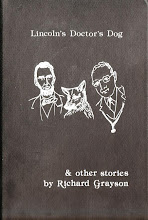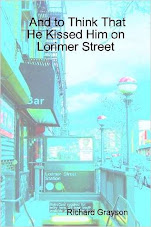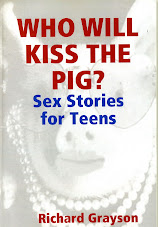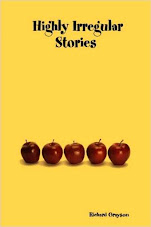
Highly Irregular Stories is an anthology of four Richard Grayson chapbooks. Although not for every taste, selections are intriguing enough to keep the reader turning pages until the end.
"Inside Barbara Walters" examines what might have happened if a young girl had not had a flash of inspiration when it came time for show-and-tell in second grade. Having left her stamp collection at home, young Barbara reached into her backpack and grabbed her Curious George book. After that, all she had to do was mention her interest in reading and the day was saved.
"Progress" takes the relationship between a young man and a stranger and brings it full circle. Ricky is prevented from buying the wrong shirt in Bloomingdale's and ends up going home with Eric Cornell. While Eric fixes dinner for the two of them, he suddenly remembers a neighborhood association meeting he must attend. For some reason, he has gotten himself named in charge of the tree parent committee. Ricky is left at Eric's place to fend for himself. When Ricky calls a pharmacy for a sleep aid, a young teenager named Rico delivers it.
"17 Fragments in Search of a Story" is exactly what the title implies. An author talks about himself and the book he is trying to write in 17 parts. While there is a natural flow to the sections, the ending is not one readers are going to forget.
"Eating at Arby's" was the longest selection and the one I liked least. A retired couple moves to Florida (where else?) and discovers life is not quite what they imagined. In a bizarre move, Grayson takes their day-to-day banter and turns it into an irritating form of repetition. It makes the two main characters sound like idiots. However, I found the reference of wanting to take a trip to Columbia amusing.
"The Governor of the State of Depression" looks into the life of a politician and shows the glamour of a life in public office is not always what people think.
Grayson is hardly a typical author. He takes real life issues in society and uses them freely in every story he writes. With the varied selection, readers will find at minimum one thing they like even if they consider the rest to be junk.


































